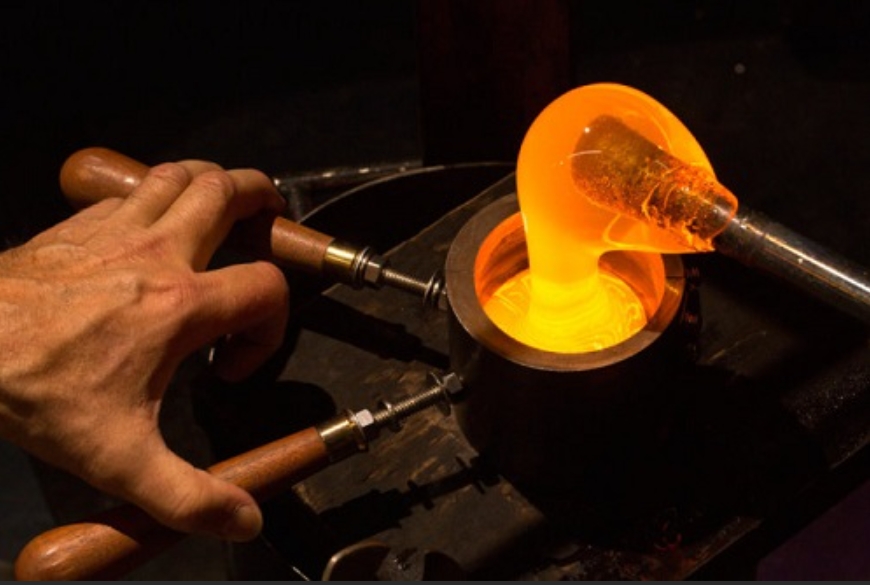What are the characteristics of hand-blown glassware?
What are the characteristics of hand-blown glassware?
Glass blowing, a captivating art form with roots reaching back through centuries, represents a fusion of craftsmanship and creativity. Originating in the Roman Empire around the 1st century BCE, the art of shaping molten glass through the breath of skilled artisans has evolved into a rich cultural heritage.
The defining characteristic of hand-blown glass lies in the artisan’s hands-on approach. Each piece is a unique creation, shaped with precision, guided by the artist’s experience, and often showcasing subtle irregularities that add to its charm. This method allows for a level of customization and artistic expression that sets hand-blown glass apart.

Hand-blown glassware
What is hand-blown glass?
Hand-blown glass is also called mouth-blown glass or artisanal glass. It's a traditional technique of glassblowing where skilled artisans shape molten tempered glass with manual tools and by using their breath. This technique emphasizes the individual craftmanship, which results in intricate and unique glass creations.
Process:
- Gathering: This process starts with the glassblower transferring molten glass onto the end a blowpipe.
- Marvering: To shape the glass and to cool it, it is rolled onto a steel marver table. This provides a base for further manipulation.
- Initial Shaping: The glassblower begins the shaping process by using tools such as wet newspapers pads or wooden blocks. This creates a basic structure.
- Blowing: A blowpipe with a partially formed piece of glass is blown through, causing a bubble to form in the glass. This step is essential for controlling the final size and shape.
- Further Shaping: The Glassblower continues to shape glass by rotating, swinging and manipulating it using tools. To achieve the desired design, this phase requires precision and skill.
- Additions and decoration: During the process, additional layers of colored glass, decorative elements, or other colors may be added to the piece in order to improve its aesthetic appeal.
- Annealing - Once the desired shape has been achieved, the piece of glass is cooled in a controlled manner. This process is called annealing. This process prevents internal stress and ensures that the glass cools evenly.
- Final touches: To complete hand-blown glasswork, you can add details, polish, cut, or finish the work after annealing.
- Hand-blown glass is also called mouth-blown glass or artisanal glass. It's a traditional technique of glassblowing where skilled artisans shape molten tempered glass with manual tools and by using their breath. This technique emphasizes the individual craftmanship, which results in intricate and unique glass creations.
Advantages and disadvantages of hand-blown glass
Advantages:
Hand-blown glassware is characterized by the use of hand craftsmanship in the production process. Skilled artisans give each piece a personalized touch and unique style, creating a one-of-a-kind work of art.
Hand-blowing allows for a high degree of customization and personalization. Artisans can create unique designs that incorporate intricate details and meet specific customer preferences.
The handmade nature of the craft allows artisans to create expressive and diverse designs. Hand-blown glassware is both traditional and contemporary, with a wide range of aesthetic possibilities. Artisans have the freedom to experiment with a variety of shapes, colors, and techniques, thus allowing the work to transcend the functional object and become a true work of art.
The hand-blown glass embodies heritage and tradition. This art form has been passed down from generation to generation, and contemporary artisans often draw inspiration from historical techniques.
Disadvantages:
Hand-blowing is a more time-consuming procedure than machine-blowing. From molding to cooling, manual labor is needed. This results in slower production.
Hand-blown glass is typically more expensive due to the labor-intensive nature. The cost of skilled craft work is higher. Some consumers may perceive hand-blown glass as imperfect because of subtle irregularities.
Handblown glass is less productive than machine-blown glass. Hand-blown glass can only be produced in small quantities and is therefore not suitable for mass production.
The skill and expertise of an artisan is crucial to the quality of glass hand-blown. The consistency of the finished product can be affected by differences in the skill level between artisans. Hand-blowing can make it difficult to reproduce an exact design. Even the same design may produce different results. It can be difficult to maintain uniformity in a specific item.